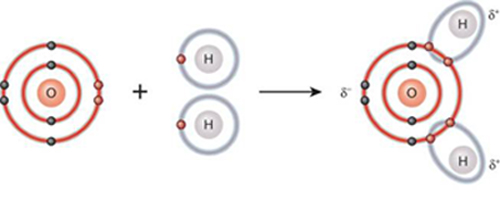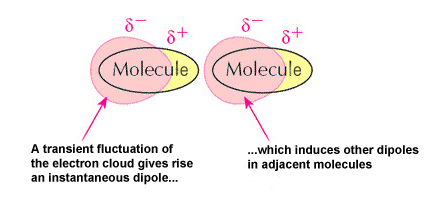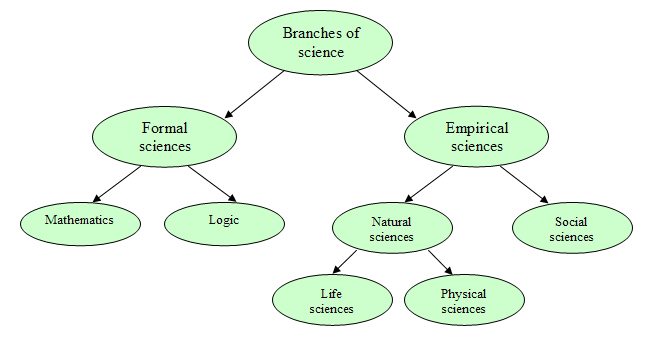Bohr atomic model was one of the first classic atomic models where the electrons orbit at specific distances from the atomic nucleus, like the planets orbit around the Sun.
This model can explain the reactivity and chemical bonds in certain elements, but it is just an approximate model because the electrons are not located in orbits but in atomic orbitals. These atomic orbitals are regions of space where the probability of finding an electron is greater according to the mathematical equations of quantum mechanics (Schrödinger equation). These atomic orbitals, with complex shapes, arise from the fact that electrons does not behave only as particles, but also as waves. Therefore, the term "orbit" in Bohr model is replaced by "atomic orbital" in this quantum-mechanic description.
Now, I will explain some concepts about quantum mechanics, but do not worry, I will try to do it in a simple and concise way.
Quantum mechanics establishes that to know an electron state in an atom (where that electron is in space), it is necessary to know the value of four quantum numbers, each one indicates a different property for that electron:
Quantum mechanics establishes that to know an electron state in an atom (where that electron is in space), it is necessary to know the value of four quantum numbers, each one indicates a different property for that electron:
▣ Principal quantum number (n): indicates the orbital energy, the shell and the average distance between an electron and the nucleus. Its value goes from 1 to the shell containing the outermost electron of that atom, n = 1, 2, 3....
▣ Angular or azimuthal quantum number (l): describes the orbital shape. Its value depends on the former one (n), and it goes from 0 to n-1, l = 0, 1, 2,.....n-1.

| l value | Type of orbital | Orbital shapes |
|---|---|---|
| 1 | s | Spherically shaped |
| 2 | p | Dumb-bell shaped |
| 3 | d | Most butterfly shaped |
| 4 | f | Exotic and complex |
▣ Magnetic quantum number (ml): characterises the orientation of the atomic orbital in space according to the axes X, Y and Z. It also depends on the former quantum number (l), the values ranges from –l to +l, with integer steps, including zero.
▣ Electron spin quantum number (ms): unlike the others, it does not depend on another quantum number; ms has just one of the two following values: +1/2 and -1/2. These two numbers tell us the two possible spin movements of an electron: clockwise and anticlockwise.
| Name | Quantum number | Allowed values |
|---|---|---|
| Principal quantum number | n | 1, 2, 3... |
| Angular or azimuthal quantum number | l | 0, 1, 2, 3...n-1 |
| Magnetic quantum number | ml | -l, (-l+1)...0...(l+1), l |
| Electron spin quantum number | ms | 1/2, -1/2 |
So, the general idea you get from all this is that to describe an electron you need four properties that are indicated by four numbers, it is as if we would like to characterise an article of clothing with four features. Let’s say for example:
▶ Design (to know if it is a shirt, a scarf, a skirt, a pair of trousers…)
▶ Size (to know if it is an article of clothing for children, teenagers or adults)
▶ Color (blue, red, white…)
▶ Type of fabric (nylon, wool, cotton…)
Once we have all this information we can know what an article of clothing we are talking about. In the same way, once we know the four quantum numbers we can find out what electron we are referring to and where it is.
As we move forward along the periodic table the number of electrons in each element is increased by one unit in accordance with two principles, those are Pauli exclusion principle and Hund’s rule:
▣ The first one states that in the same atom, two electrons cannot have identical values for all four of their quantum numbers, in other words, two electrons cannot be in the same quantum state. If this principle were not true, the chemical behaviour of elements, and hence also nature, would be completely different from the way in which we know it.
▣ On the other hand, Hund’s rule states that in the same atomic orbital, electrons fill it in such a way that these electrons tend to be unpaired.
Making an analogy, we could say that electrons behave like people getting on a bus. You will have noticed that we prefer to sit without anyone next to us, and only when we do not have a chance to do it, it is when we sit next to someone else. Like electrons, in the same atomic orbital, we would rather be “unpaired” on a bus.
▣ The first one states that in the same atom, two electrons cannot have identical values for all four of their quantum numbers, in other words, two electrons cannot be in the same quantum state. If this principle were not true, the chemical behaviour of elements, and hence also nature, would be completely different from the way in which we know it.
▣ On the other hand, Hund’s rule states that in the same atomic orbital, electrons fill it in such a way that these electrons tend to be unpaired.
Making an analogy, we could say that electrons behave like people getting on a bus. You will have noticed that we prefer to sit without anyone next to us, and only when we do not have a chance to do it, it is when we sit next to someone else. Like electrons, in the same atomic orbital, we would rather be “unpaired” on a bus.
Let's consider the nitrogen atom which electron configuration[1] is 1s22s22p3, whose electrons are arranged as follows:
As you can observe, the electrons in p orbital prefer to be unpaired, since all the orbitals in a shell (in our case, p orbitals in shell 2) must be occupied by, at least, one electron before a second electron is added. This fact, explained by Hund's rule, occurs so that the atom is more stable energetically.
[1] It is the distribution of electrons of an atom in each energy level and atomic orbitals.
Source: McGraw-Hill, Física Raymond A. Serway, 1993.
McGraw-Hill, Química Raymond Chang, 1992.
McGraw-Hill, Química Raymond Chang, 1992.

















Your opinion matters